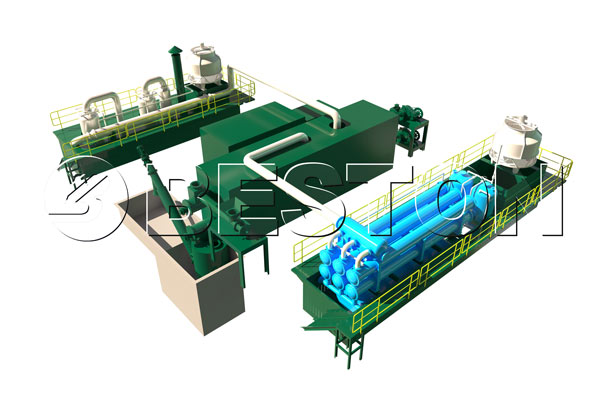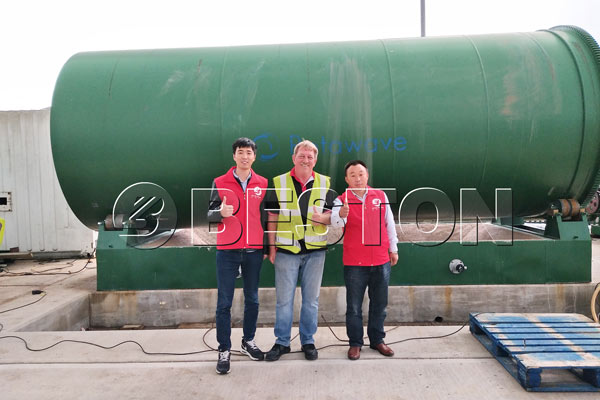Anyone that has studied human history knows that civilization has been able to make charcoal from wood for a thousand years or more. Charcoal had the advantage of being easier to carry into a metropolitan city and be sold for use as a home cooking fuel, home heating fuel, and eventually to melt metals to be forged. The manner in which charcoal was made has always been the same. Chop and stack lots of timber and thick brush in a wooded area. Then, cover the woodpiles with dirt before lighting it on fire. The restriction of air, not having enough oxygen to completely burn, is what makes charcoal. Now, fully automatic pyrolysis plant does the same thing on an industrial scale, more accurately, faster, and better.

Not Only Wood Can Be Turned Into Charcoal
Of course, it’s easy to imagine coconut shells, sawdust, and other seemingly woody items turned into charcoal. However, it is also possible to make charcoal from wheat straw, corn stalks and husks, rice husks, restaurant waste, sewage sludge, peach pits, and a thousand other types of organic waste. If you want, you can also use it to recycle waste tyre and plastic. Details can be found from the fully continuous tyre pyrolysis plant.
The only difference between the different types of organic waste when it comes to pyrolysis is whether the waste needs to be dried beforehand, and the temperature that the reactor needs to reach for decomposition. And, the higher the temperature of the reactor chamber, the more decomposition that is attained.
You can crank up the heat and get almost all combustible gases, no oils, and just biochar as a remnant. Lower temperatures will get oils in several thicknesses that can be used in industrial processes. Plus the biochar at that stage can still be burnt as fuel.

Biochar Has Dozens Of Uses
But probably the most valuable will be that it acts as a storage sink of carbon that can take up to one thousand years to degrade. That’s much more effective at removing carbon dioxide from the atmosphere than any kind of machine can accomplish. Plants do it as they grow, but when they rot in the wild the carbon dioxide is released back into the atmosphere. It’s a constant cycle, using and reusing the same carbon over and over again. However, if all of the agricultural waste, sewage sludge, and industrial waste was converted to biochar, it could then be tilled back into the soil and act as a huge carbon sink for a thousand years.
When Buying A Pyrolysis Plant
You’ll want to take your time and read the facts. Start with the type of biomass you have on hand and how much there is of it. If you have a 10 year supply of tires, plastic, or other biomass, get the continuous pyrolysis plant that can be run 24 hours per day, every day of the year. This is preferable to the batch plants that work in batches.
Then, buy from the continuous pyrolysis plant manufacturers that have a long-standing reputation for quality and good service: https://www.bestongroup.com/waste-tyre-pyrolysis-plant-suppliers/. They’ll have to have parts readily available for repairs and maintenance in a local warehouse for quick delivery. Downtime costs money and biomass will stack up quickly if your machine is out of service. Read online reviews written by verified customers to determine the longevity, customer service, and other aspects of owning a plant.
If pyrolysis plants are used across the nation and around the world, much of the problems with solid waste disposal will disappear. Plus, if biochar is used to enrich soils the problem with carbon dioxide in the atmosphere, and the resulting global warming could also be mitigated at the same time.
If you have waste in hand and want to make money from them, contact Beston Group Company China online now.